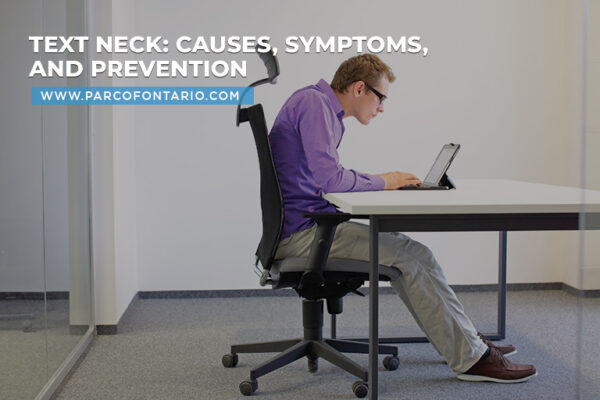
Text Neck: Causes, Symptoms, and Prevention
Many of us spend long hours hunching over our electronic mobile devices and laptops. As we spend more time texting, browsing social media, and reading on our devices, this constant downward gaze…
Read More

Have you had a massive headache? How did you know if it was caused by a migraine or a stroke?
Severe migraines and strokes can have very similar symptoms, share similar characteristics, and in some medical settings can be misdiagnosed for each other. Transient ischemic attacks (TIA) also known as “mini-strokes,” can have symptoms that are very similar to migraines with aura, including speech impairment, muscle weakness, and visual disturbances.
In this article, we will explore the differences between the two, so that you can provide better information to medical intervenors, should you or someone close to you suffer from either condition.
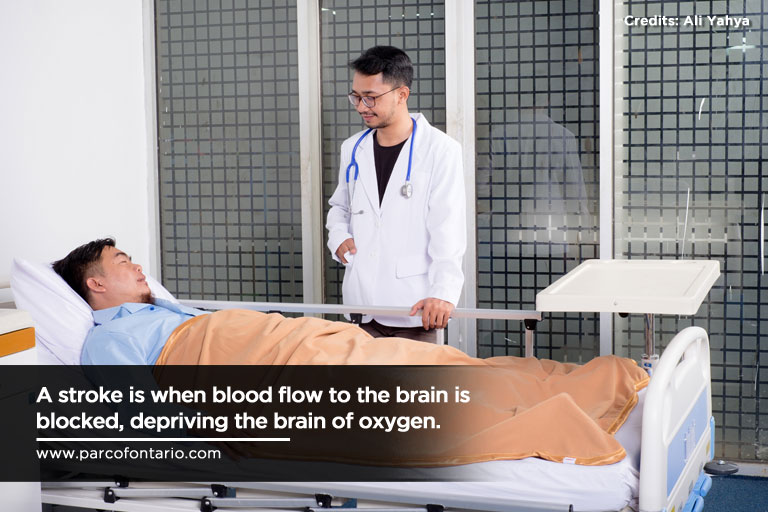
A stroke occurs when blood circulation to a part of the brain is interrupted either due to internal bleeding (hemorrhagic stroke) or a clot in the artery (ischemic stroke). Because blood flow is stopped, brain cells are deprived of oxygen and nutrients, and the brain starts to weaken and eventually loses function.
Typical symptoms of stroke:
TIA are often mistaken for a migraine because the flow of blood to the brain is restricted only for a short time. Usually lasting for an hour or less, mini-strokes have less severe symptoms than a regular stroke.
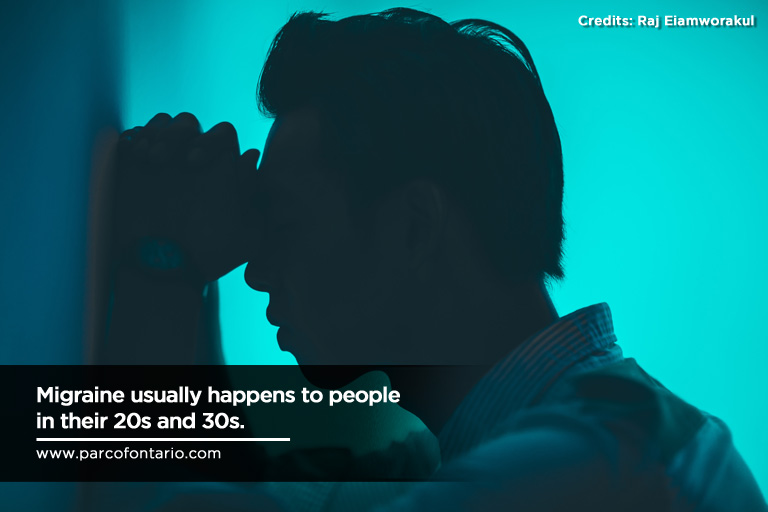
Migraines are characterized by recurrent head pains and other symptoms, like extreme headache, vomiting, nausea, or sensitivity to smell, light, touch, or sound. Migraines often include a pulsating or throbbing pain on one side of your head, temples, or around the eye. A migraine with aura can be confused with a stroke; this happens more often as individuals age.
An ‘aura’ refers to neurological symptoms that happen immediately before a migraine episode. Here are some ways migraine with aura can affect your senses:
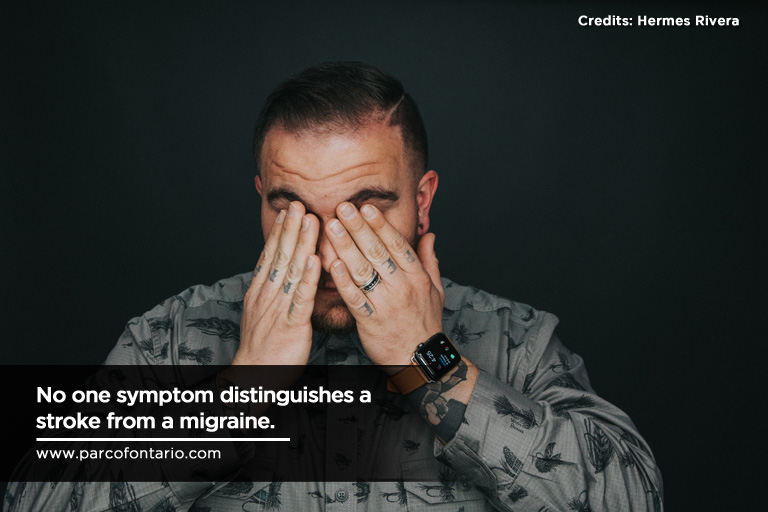
Since stroke and migraine share common symptoms, no single trait distinguishes one from the other. Each illness exhibits several features, and not all will be present with every event, and some symptoms may overlap.
Shared symptoms of migraines and strokes and how they can differ:
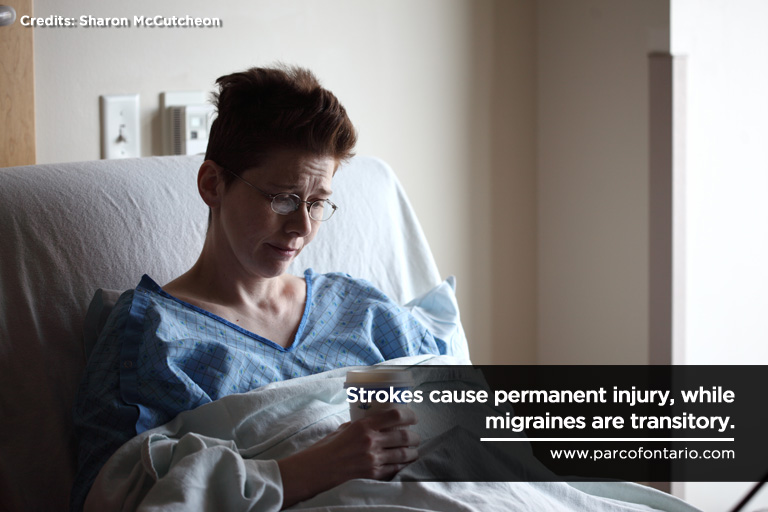
Differences
While the two conditions have similar symptoms, stroke and migraine also have many differences in risks, triggers, recurrences, and treatment.
Treatment

Migraines have no cure; the headaches that come with the condition can be managed, however. Effective pain management strategies include:
A stroke is a medical emergency. Call 9-1-1 for immediate attention if you are having stroke symptoms.
A CT-scan is necessary to diagnose a stroke accurately; however, paramedics and ER specialists are trained in early-intervention techniques that can minimize long-term health impacts and, in some cases, permit a near-full recovery.
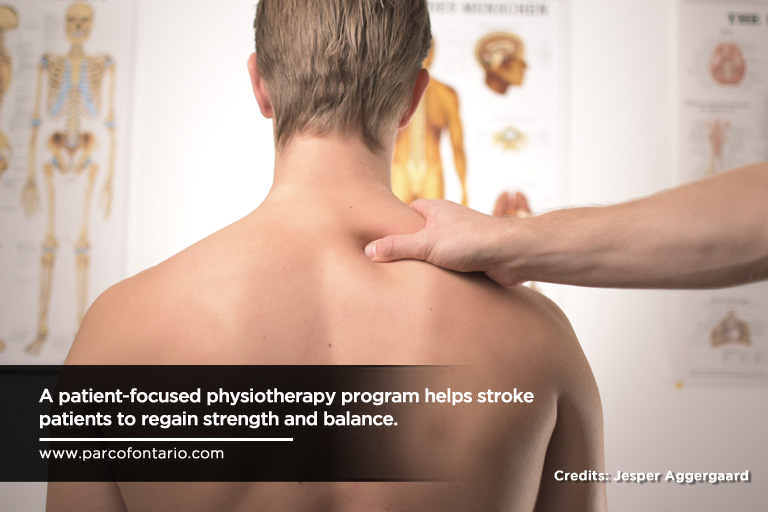
Patients generally have some degree of disability following a stroke and need to undergo physiotherapy (or physical therapy) and rehabilitation. Ischemic strokes and hemorrhagic strokes have different causes, and therefore require different treatments to maximize recovery.
A tailored physiotherapy program can help stroke patients relearn basic reflexes and muscle skills, return them to prior functioning levels, and introduce them to activities and lifestyle changes that promote healing, prevent further incidents, and enhance their overall health.
Whether you need an immediate pain relief treatment for a recurring migraine or a customized physical therapy program for a recuperating stroke patient, Physiotherapy and Rehabilitation Centres (PARC) of Ontario is here to help you on your road to recovery. We provide acupuncture therapy sessions for a wide range of medical conditions, and we design patient-focused physiotherapy programs that facilitate a speedy recovery.
Call us at (905) 897-2092 for acupuncture and physiotherapy services in Ajax, Mississauga, Oshawa, Scarborough, and Whitby or book your appointment online.